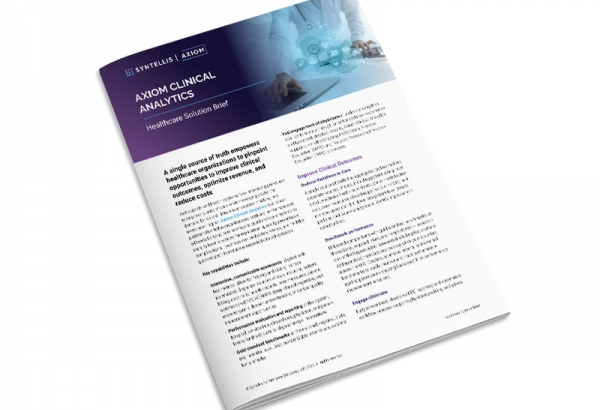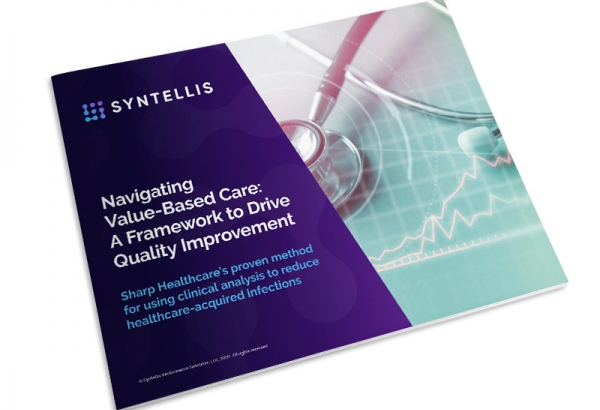2020 has been a year of lessons learned — some realized quickly, others we’re still analyzing and learning.
One example is how using quality measurements to gauge clinical and operational success provides added value to hospitals and health systems grappling with revenue losses.
Cancelled elective procedures during the initial height of the pandemic cost U.S. hospitals around $17 billion monthly, and revenue operating margins and operating room usage continues to lag.
September 2020 operating margins — even with CARES funding — were lower than in September 2019. Likewise, operating room usage increased compared to spring 2020, but remains down 12% when comparing year-over-year usage. At the same time, labor expenses continue to rise.
In challenging times, healthcare organizations can sustain high-value care delivery and ensure long-term financial viability by analyzing clinical data to inform improvement efforts related to quality, cost, and patient experience. The following examples show the value of clinical data to inform clinical, operational, and financial decisions.
PPE costs skyrocket
A comparison of costs for personal protective equipment (PPE) pre-COVID-19 and in early April shows that PPE prices rose by 1,064%. The CARES Act set reimbursement rates for PPE, so providers must understand and account for those costs when filing for repayment. Where direct reimbursement isn’t possible, those costs should be assigned to the relevant patients and cases.
The financial burden of the additional PPE required for treatment should be allocated to COVID-19 patients, but hospitals must also determine how higher overall supply prices impact the cost of overall patient care. Aggregating, analyzing, and monitoring key cost and quality metrics ensure organizations can maximize reimbursement and optimize revenue.
Tapping into telehealth
The use of telemedicine likely was a small portion of healthcare revenues pre-COVID-19, but the medium quickly became mainstream during the pandemic.
Telehealth visits plateaued in August at just over 6% of medical claims for patients with private insurance. While 6% is a large drop from telehealth use during the initial height of the pandemic, it represents a 3,400% increase over August 2019 when telehealth represented just 0.2% of claims. Four in five physicians have now conducted telehealth visits.
Creating a service line for telehealth visits can help providers understand the huge potential for telemedicine and remote services. Estimates put the potential for virtualized office and home care visits at $250 billion annually. Clinical metrics also can help providers compare telehealth versus in-person visits.
Reducing variations in care
Historically, failures of care coordination lead to wasteful spending of between $27.2 billion and $78.2 billion annually. Many of those failures can be traced to hospital readmissions or preventable infections that can lead to federal penalties.
Even before COVID-19 hit, social determinants of health such as access to healthy food and safe housing informed an estimated 70% of health outcomes, demonstrating the importance of patient-level data. Many organizations are moving to add professional services data from clinics and physicians, including demographic and employment data, episodic diagnostic data, or chronic disease information.
A single source of truth for clinical analytics can aggregate and normalize disparate data sources such as patient billing, cost detail, electronic health record data, patient satisfaction data, core measures, clinical registries, and more. By allowing users to drill down into patient-level data, they can perform root cause analysis and identify improvement opportunities.
Clinical analytics in action
Garnet Health (formerly known as Greater Hudson Valley Health System) leverages data from Axiom™ Clinical Analytics and other sources to track 12 quality measures monthly. This award-winning Harm Index tracks adverse incidents among patients and helped reduce such incidents by 48% and 54%, respectively, at two hospitals in New York.
Garnet Health also uses clinical analysis to help emergency department staff identify “frequent fliers” to reduce hospital readmissions while keeping care quality high.
Data from Axiom Clinical Analytics is used throughout the organization, from Board reporting on key metrics to analyzing pay-for-performance programs and incentive compensation for leaders, to support clinical quality improvement. This is just one example of how organizations can use technology and data analysis to identify new ways to drive financial and clinical performance improvement, and take necessary action.
You might also be interested in...

Garnet Health Improves Outcomes and Reduces Readmissions Using Axiom Clinical Analytics

Axiom Clinical Analytics


